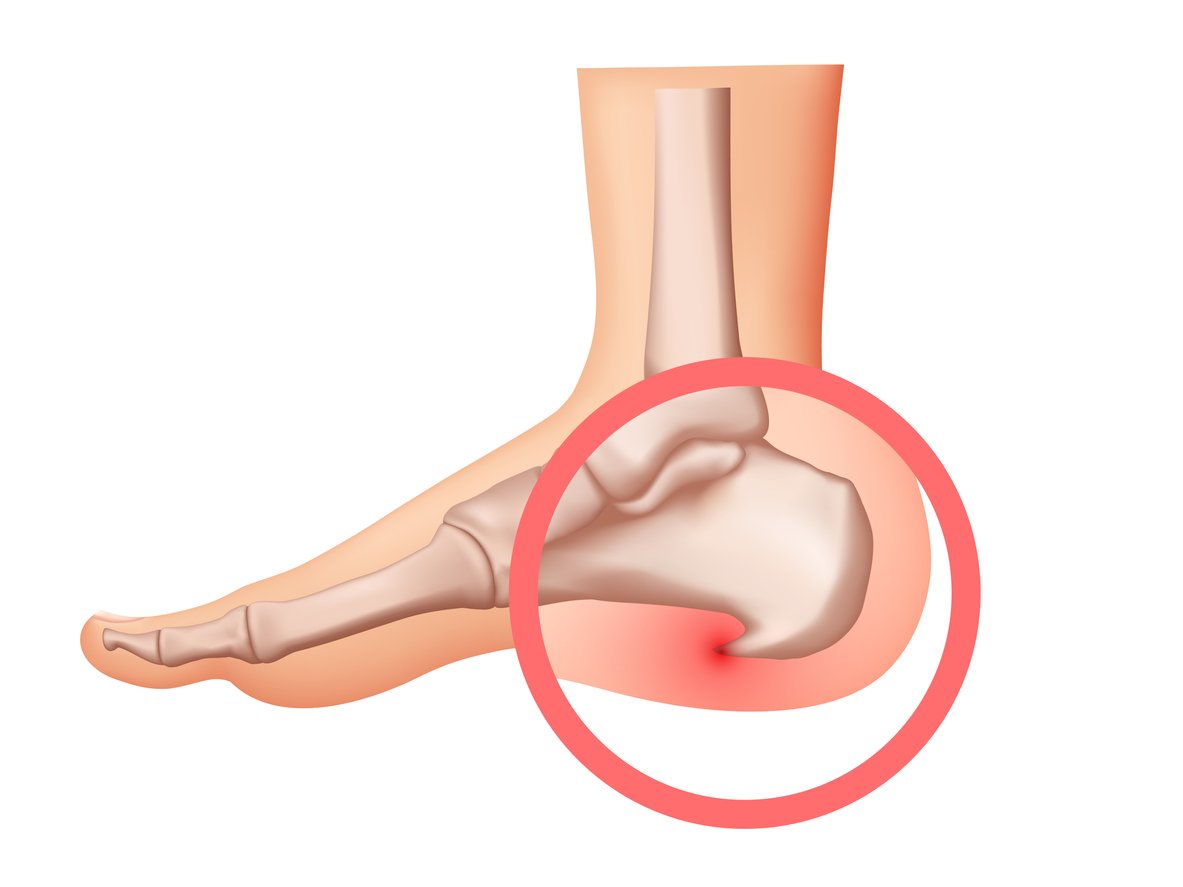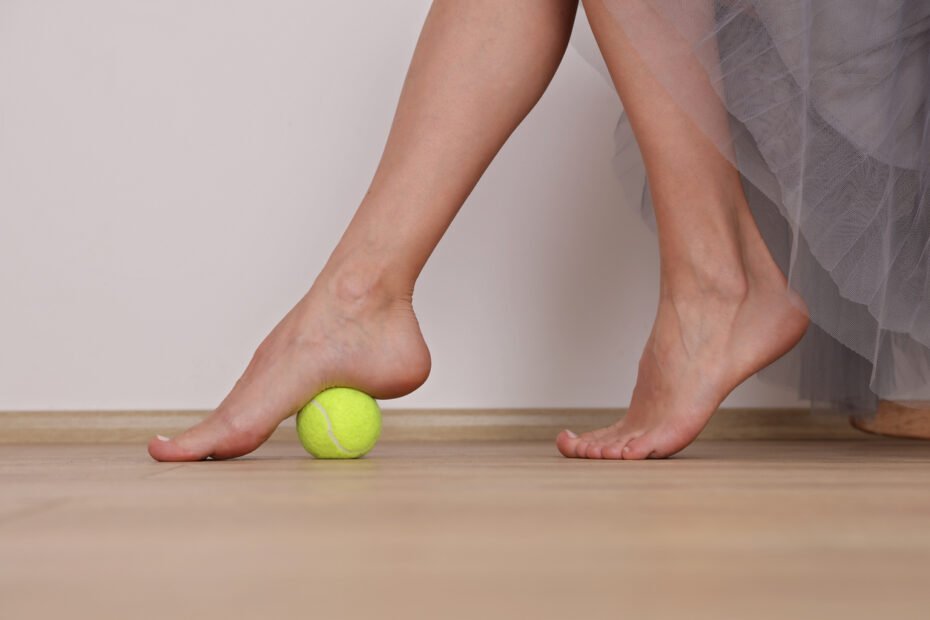In the quiet morning hours, just as the sun peeks over the horizon, Molly laces up her sneakers. The familiar ache in her heel reminds her of the journey she’s on – a battle against plantar fasciitis. But today, she smiles, knowing she has a new tool in her arsenal. Enter the humble plantar fasciitis tennis ball – an unlikely hero in the fight against plantar fasciitis. This simple, yet effective exercise involves rolling a tennis ball under your foot to gently stretch the plantar fascia. This can provide immense relief and aid in recovery.
The Role of Tennis Ball in Plantar Fasciitis Treatment
Now that we have a better understanding of plantar fasciitis, let’s explore how the tennis ball can play a role in its treatment. Using a tennis ball for foot massage, also known as tennis ball massage, can provide temporary relief and deep tissue massage for the affected foot. By targeting the plantar fascia, the tennis ball helps alleviate pain and discomfort associated with plantar fasciitis. This affordable and accessible tool, known as tennis ball massage, allows for targeted relief and promotes relaxation, making it an effective addition to your plantar fasciitis treatment plan.
Why a Plantar Fasciitis Tennis Ball?
A tennis ball is an excellent choice for plantar fasciitis treatment for several reasons. Firstly, it is a good idea because it offers an affordable and easily accessible solution for self-massage and pain relief. Tennis balls are readily available and can be purchased at sporting goods stores or online. They are also small enough to be used in the comfort of your own home, making them a convenient choice for incorporating into your daily routine.
Benefits of Using a Tennis Ball
Using a tennis ball for foot massage and rolling offers several benefits for individuals with plantar fasciitis. It provides deep tissue massage, targeting the affected areas of the foot and promoting temporary relief from pain and discomfort. The pressure applied by the tennis ball stimulates blood circulation and eases muscle tension, improving the overall condition of the plantar fascia. Incorporating tennis ball foot massage for plantar fasciitis into your regular routine can provide significant relief and aid in the healing process, especially when targeting the bottom of your foot.

Tennis Ball Exercises for Plantar Fasciitis
To maximize the benefits of the tennis ball for plantar fasciitis treatment, there are specific exercises you can do. These exercises target the plantar fascia and the arch of your foot, helping to stretch and massage the affected area. By incorporating tennis ball exercises into your daily routine, you can promote pain relief and improve the flexibility of the plantar fascia. Try these tennis ball exercises to find relief and support your plantar fasciitis treatment plan.
Exercise 1: Rolling the Foot
One of the most common tennis ball exercises for plantar fasciitis is rolling the foot. This exercise targets the bottom of the foot and provides temporary relief from pain and discomfort. Here’s how you can do it:
- Place a tennis ball on the floor and roll the ball under your foot, applying pressure where you feel the most pain.
- Roll the ball for 5-10 minutes, focusing on the areas of the foot that are most tender.
- Experiment with different rolling directions and pressure levels to find the most effective relief.
- Perform this exercise several times a day, especially after prolonged periods of standing or walking.
Exercise 2: Foot Flexes
Another tennis ball exercise for plantar fasciitis is foot flexes. This exercise targets the calf muscle and the Achilles tendon, helping to stretch and strengthen the affected foot. Here’s how to do it:
- Place the tennis ball on the ground and stand on it, placing your body weight on the foot.
- Roll the ball back and forth under your foot, flexing and extending your foot and toes.
- Aim to do 10-15 repetitions, focusing on the calf muscle and the Achilles tendon.
- Perform this exercise regularly to improve the flexibility and strength of your foot.
Exercise 3: Arch Stretch
Stretching the arch of the foot is another effective tennis ball exercise for plantar fasciitis. This exercise targets the arch of the foot and helps provide a good stretch for the plantar fascia. Follow these steps to perform the arch stretch:
- Sit on a chair and place the tennis ball under the arch of the affected foot.
- Roll the ball back and forth, applying pressure and stretching the arch of the foot.
- Hold the stretch for 30 seconds to a minute, focusing on the areas of tension.
- Repeat the stretch 3-5 times, performing the exercise regularly for optimal results.

Tips for Effective Tennis Ball Treatment
While tennis ball treatment for plantar fasciitis can be beneficial, it’s important to keep a few tips in mind for effective and safe usage. By following these tips, you can make the most of your tennis ball therapy and ensure an effective treatment plan for your plantar fasciitis:
Best Practices for Tennis Ball Exercises
- Apply enough pressure: When using the tennis ball, apply enough pressure to target the affected areas without causing excessive pain.
- Do it for a period of time: Perform the tennis ball exercises for 5-10 minutes at a time, several times a day, to maximize the benefits.
- Use good arch support: Make sure to wear supportive shoes or use orthotics that provide good arch support during and after the tennis ball treatment.
When to Avoid Tennis Ball Treatment?
While the tennis ball treatment for plantar fasciitis can be highly effective, there are instances when it is best to avoid it. If you have certain medical conditions such as diabetes or neuropathy, or if your condition is worsening despite the treatment, consult with a healthcare professional for guidance. Using tennis ball rolling for plantar fasciitis may not be the best option for everyone, and it’s important to seek medical advice for alternative treatment options.

Understanding Plantar Fasciitis
To effectively manage plantar fasciitis, it’s important to understand the condition and its causes. Plantar fasciitis, which is the medical term for inflammation and irritation of the plantar fascia, is a thick band of tissue that connects the heel bone to the toes. It is characterized by heel pain, foot pain, and discomfort, especially in the morning or after long periods of rest. While the exact cause of plantar fasciitis is unknown, factors such as weight gain, high arches, poor arch support, and wearing flip flops or shoes without adequate support can contribute to the development of the condition. Understanding the medical term for this condition is crucial for proper diagnosis and treatment.
Causes of Plantar Fasciitis
Weight gain can put extra pressure on the foot, leading to inflammation of the plantar fascia. Individuals with high arches or flat feet are also more prone to developing plantar fasciitis, as the foot mechanics may contribute to excessive strain on the plantar fascia. Additionally, the lack of proper arch support, especially when wearing flip flops or shoes with insufficient support, can aggravate the condition and increase the likelihood of developing plantar fasciitis.
Symptoms and Diagnosis of Plantar Fasciitis
Symptoms of plantar fasciitis include heel spurs, which are calcium deposits on the heel bone, and significant pain and discomfort in the bottom of the foot and heel. Plantar fasciitis is a painful condition that can make daily activities difficult. To diagnose plantar fasciitis, medical professionals typically review the patient’s medical history and perform a physical examination, checking for signs of tenderness and pain in the affected foot, including slight swelling, redness, and tenderness. In some cases, imaging tests such as X-rays may be used to confirm the diagnosis of slight swelling.
Other Non-invasive Treatments for Plantar Fasciitis
In addition to tennis ball therapy, there are other non-invasive treatments available for plantar fasciitis pain management. These alternative therapies can be used in conjunction with the tennis ball exercises to provide comprehensive relief and support for the condition. Some of these include:

Ice Therapy and Massage
To alleviate plantar fasciitis pain and reduce inflammation, ice therapy and massage are effective solutions. Using frozen water bottle therapy can provide relief by alleviating heel pain and promoting healing. Additionally, massaging the affected foot with a water bottle helps reduce inflammation and provides pain relief for plantar fasciitis discomfort, aiding in the healing process. These methods can be beneficial in providing comfort and promoting recovery from plantar fasciitis without the need for invasive treatments or medical intervention.
Stretching and Strengthening Exercises
To effectively manage plantar fasciitis, regular exercises play a crucial role in improving flexibility and preventing re-injury. Engaging in calf stretching and strengthening exercises helps alleviate heel pain and promotes recovery. Similarly, stretching the arch of your foot and strengthening the affected area are essential for managing plantar fasciitis and preventing discomfort. These exercises, when done correctly and consistently, aid in promoting foot health and mobility.
Over-the-counter Medications
Over-the-counter medications can temporarily relieve plantar fasciitis pain by reducing inflammation and discomfort. They are effective in managing heel pain and associated discomfort, providing relief for a period of time. It’s a good idea to consider over-the-counter pain relief medications as they can help with the upper part of your foot, the big toe, and even the ball of your foot, especially at the end of the day. When used with other non-invasive treatments like foot massagers or good arch support, their effects can be truly beneficial.
When to Seek Professional Help?
If you’re experiencing severe pain, difficulty walking, or if your symptoms persist despite home treatments, it’s time to seek professional help for your plantar fasciitis. A podiatrist can provide a comprehensive diagnosis and recommend appropriate treatment options tailored to your specific condition. Remember, early intervention can prevent further complications.
Signs that You Need Medical Intervention
When non-invasive treatments fail to alleviate persistent heel pain, seeking medical intervention for plantar fasciitis becomes essential. Effective management is crucial if significant pain and weight gain are experienced due to the condition. Additionally, the presence of heel spurs and an inadequate response to non-invasive treatments may necessitate medical intervention. Ignoring these signs can lead to prolonged discomfort and delayed recovery. Identifying the need for medical support within a reasonable period of time can significantly improve the outcome and prevent the condition from worsening.
What to Expect from a Podiatrist Visit?
When visiting a podiatrist for plantar fasciitis, you can expect personalized care and treatment options tailored to your needs. They may recommend custom orthotics and cortisone injections for pain relief. Calf stretching and physical therapy will likely be part of your treatment plan.
Can Tennis Ball Treatment Completely Cure Plantar Fasciitis?
While tennis ball treatment offers temporary relief from plantar fasciitis pain, it cannot completely cure the condition. Rolling the foot on a tennis ball can provide significant pain relief and is an important part of the treatment plan, along with other methods such as shockwave therapy. However, it should be used as a form of pain management and not as a standalone cure. In fact, shockwave therapy has been shown to be a highly effective treatment for plantar fasciitis, providing long-term relief and promoting healing in the affected area.

How long should I roll a ball under my foot for plantar fasciitis?
Rolling a tennis ball under your foot for plantar fasciitis, also known as a rolling massage, should be done for 5-10 minutes at a time. It is recommended to do this exercise several times a day, especially after prolonged periods of standing or walking. Adjust the pressure on the ball as necessary and focus on the areas that are most tender. Consult with a healthcare professional if you experience pain while doing this exercise. You can also try using a frozen water bottle or mobility ball for added relief and decreased inflammation at the bottom of your foot.
What part of my foot should I be massaging to ease plantar fasciitis?
To ease plantar fasciitis, focus on massaging the arch of your foot. Using a tennis ball, roll it under your foot for a few minutes each day. Apply gentle pressure and avoid any sharp pain. This, combined with stretching exercises, can help alleviate plantar fasciitis symptoms.
What foot exercises are good for plantar fasciitis?
Foot exercises play a crucial role in managing plantar fasciitis. Rolling a tennis ball under the foot helps relieve pain and stretch the plantar fascia. Toe curls strengthen foot muscles, while calf stretches alleviate tension. Remember to consult a healthcare professional for personalized exercise recommendations.
Are there any risks associated with using a tennis ball for plantar fasciitis?
Using a tennis ball for plantar fasciitis carries minimal risks. However, it’s important to use proper technique and not overdo it. Start with gentle massage and gradually increase pressure if needed. If you experience pain or discomfort, stop and consult a healthcare professional.
How often should I use a tennis ball for plantar fasciitis relief?
For effective plantar fasciitis relief, it is recommended to use a tennis ball for 5-10 minutes at a time. You can use it multiple times a day, but give your feet some rest in between sessions. Gradually increase the pressure as your feet get used to it. If you experience pain or discomfort, consult a healthcare professional.

Conclusion – Plantar Fasciitis Tennis Ball
Plantar fasciitis can be a long and challenging road, but incorporating simple exercises like the tennis ball exercise can offer significant relief. At theheelgp.com, we understand the journey and provide valuable resources to support you every step of the way.
As Molly completes her morning routine, the discomfort in her heel subsides. She knows it’s a small victory in a larger battle, but it’s a start. Could a simple tennis ball be the key to conquering your plantar fasciitis pain too?
